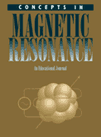
CONCEPTS IN MAGNETIC RESONANCE PART A
Scope & Guideline
Pioneering Research in Magnetic Resonance Spectroscopy
Introduction
Aims and Scopes
- Magnetic Resonance Imaging (MRI) Applications:
The journal extensively covers advancements in MRI techniques, emphasizing their applications in clinical settings, such as oncology, neurology, and rehabilitation. This includes innovative imaging methods and their efficacy in diagnosing and monitoring various conditions. - Quantum Mechanics and Spin Dynamics:
Research articles often explore the theoretical underpinnings of magnetic resonance through quantum mechanics, focusing on spin dynamics and entanglement, which are crucial for understanding the fundamental principles of magnetic resonance phenomena. - Biological and Medical Research:
The journal publishes studies that apply magnetic resonance technologies to biological systems, particularly in understanding disease mechanisms and treatment outcomes, highlighting its relevance in medical research. - Methodological Innovations in Magnetic Resonance:
A consistent focus is on the development and refinement of magnetic resonance methodologies, including new imaging sequences, computational techniques, and analysis algorithms that enhance the capabilities of existing technologies. - Interdisciplinary Approaches to Magnetic Resonance:
The journal encourages research that bridges various scientific disciplines, integrating magnetic resonance with fields like chemistry, biology, and engineering to foster comprehensive understanding and innovative applications.
Trending and Emerging
- Deep Learning and AI in MRI:
There is a growing trend of integrating artificial intelligence and deep learning techniques into MRI analysis. This includes the development of algorithms for image reconstruction and diagnosis, which enhances the precision and efficiency of medical imaging. - Multimodal Imaging Techniques:
Recent studies increasingly combine magnetic resonance with other imaging modalities, such as transcranial magnetic stimulation and ultrasound, to provide comprehensive insights into complex medical conditions. - Clinical Applications in Neurology and Oncology:
A significant uptick in research focusing on neurological and oncological applications demonstrates the journal's commitment to addressing pressing health issues, particularly in understanding brain disorders and cancer treatment efficacy. - Advanced Imaging Techniques:
Innovations in imaging sequences, such as diffusion-weighted imaging and super-resolution techniques, are becoming more prominent, reflecting the field's movement towards enhanced imaging capabilities and better diagnostic tools.
Declining or Waning
- Traditional NMR Spectroscopy:
There has been a noticeable decrease in publications focused solely on traditional NMR spectroscopy techniques, as newer methodologies and hybrid techniques gain traction in the field. - Classical Theoretical Studies:
Papers centered on classical theories of magnetic resonance are appearing less frequently, possibly overshadowed by more innovative quantum mechanical approaches and computational techniques. - Environmental Applications of Magnetic Resonance:
While environmental studies using magnetic resonance were once a more common feature, these topics have diminished, likely due to a growing emphasis on clinical and biomedical applications.
Similar Journals

Physics & Imaging in Radiation Oncology
Elevating Standards in Radiation Therapy with Advanced Imaging SolutionsPhysics & Imaging in Radiation Oncology is a premier journal dedicated to advancing the interdisciplinary field of radiation oncology through innovative research and imaging technologies. Published by Elsevier, this open-access journal has made its mark since its inception in 2017, ensuring that groundbreaking findings are accessible to a broad audience. With a strong focus on the integration of physics, imaging techniques, and oncology, the journal occupies esteemed positions in the academic landscape, ranking in the top quartile for Radiation and Radiology, Nuclear Medicine and Imaging as of 2023. The journal serves as a platform for researchers, professionals, and students to share insights and foster collaboration, ultimately improving patient outcomes through enhanced imaging and treatment modalities. Based in Ireland and operating from Radarweg 29, 1043 NX Amsterdam, Netherlands, the journal aims to bridge the gap between theoretical physics and practical applications in clinical settings.
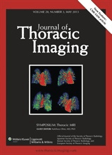
JOURNAL OF THORACIC IMAGING
Advancing Insights in Thoracic ImagingThe JOURNAL OF THORACIC IMAGING, published by Lippincott Williams & Wilkins, stands as a pivotal resource in the fields of Pulmonary and Respiratory Medicine as well as Radiology, Nuclear Medicine, and Imaging. With the ISSN 0883-5993 and E-ISSN 1536-0237, this esteemed journal has been providing critical insights and advancements since its inception in 1985, contributing significantly to the ongoing dialogue and research within these disciplines. The journal maintains a commendable position, ranking in the Q2 category in both relevant fields and achieving an impressive Scopus ranking of #46 out of 333 in Radiology and #30 out of 155 in Pulmonary Medicine, showcasing its influence and impact (with particles in the 86th and 80th percentiles, respectively). While the journal is not open access, it continues to disseminate high-quality research that informs clinical best practices and emerging technologies in thoracic imaging. As a leading publication, it serves as an essential tool for researchers, clinicians, and students seeking to stay at the forefront of thoracic health innovations.

Journal of Structural Biology-X
Illuminating the Complexities of Molecular ArchitectureThe Journal of Structural Biology-X, published by Elsevier, is a leading open-access journal dedicated to advancing the field of structural biology. Launched in 2019, it has quickly established itself as a vital resource for researchers, professionals, and students, boasting a prestigious Q1 ranking in Structural Biology for 2023 and achieving an impressive Scopus rank of #19 out of 49 in the biochemistry, genetics, and molecular biology category. With an E-ISSN of 2590-1524, this journal emphasizes accessibility and collaboration by providing open access to its comprehensive collection of research articles, reviews, and cutting-edge methodologies. The scope of the journal encompasses significant themes within structural biology, including protein structure, molecular interactions, and imaging techniques, facilitating interdisciplinary dialogue and innovation. Join the global community of scientists and contribute to the body of knowledge that propels our understanding of molecular architecture through the Journal of Structural Biology-X.

MAGNETIC RESONANCE IMAGING
Elevating Knowledge in Nuclear Medicine and ImagingMAGNETIC RESONANCE IMAGING, published by Elsevier Science Inc, stands at the forefront of research in the fields of Biomedical Engineering, Biophysics, and Radiology, Nuclear Medicine and Imaging. Since its inception in 1982, the journal has become a vital resource, currently enjoying a Q2 ranking in its respective categories as of 2023, underscoring its influence and significance within the scientific community. With an ISSN of 0730-725X and an E-ISSN of 1873-5894, it provides an essential platform for disseminating groundbreaking studies and advancements in magnetic resonance imaging technology and applications. Researchers, professionals, and students benefit from its comprehensive articles that address both theoretical advancements and practical implementation in clinical settings. The journal's commitment to advancing knowledge is reflected in its recognition in Scopus Rankings, where it lies in the 67th percentile for Radiology, Nuclear Medicine and Imaging. By fostering an environment of critical dialogue and innovation, MAGNETIC RESONANCE IMAGING remains a cornerstone publication for those dedicated to pioneering the future of imaging science.
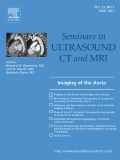
SEMINARS IN ULTRASOUND CT AND MRI
Elevating Standards in Ultrasound and ImagingSEMINARS IN ULTRASOUND CT AND MRI is a prestigious academic journal dedicated to advancing the fields of radiology, nuclear medicine, and imaging. Published by W B SAUNDERS CO-ELSEVIER INC, this journal has been a cornerstone of scholarly communication since 1984, providing a platform for high-quality research and review articles that enhance the understanding of diagnostic imaging techniques. With a current impact factor reflected in its Q3 quartile ranking among 333 journals in its category, it remains a valuable resource for researchers and clinicians alike. The journal's focus includes but is not limited to innovations in ultrasound, computed tomography, and magnetic resonance imaging, making it essential for professionals looking to stay at the forefront of imaging science. While it operates under a subscription model, its extensive archive of influential articles ensures ongoing access to critical knowledge and developments in the field. With a commitment to quality and relevance, SEMINARS IN ULTRASOUND CT AND MRI continues to contribute significantly to the evolving landscape of medical imaging.

JOURNAL OF MAGNETIC RESONANCE
Exploring the Frontiers of Magnetic Resonance ResearchThe JOURNAL OF MAGNETIC RESONANCE, a leading peer-reviewed publication from ACADEMIC PRESS INC ELSEVIER SCIENCE, serves as a vital platform for disseminating cutting-edge research in the fields of biochemistry, biophysics, and condensed matter physics. With an ISSN of 1090-7807 and an E-ISSN of 1096-0856, this journal is committed to publishing innovative studies that explore the principles and applications of magnetic resonance techniques. Ranking in the Q3 and Q2 quartiles across various categories in 2023, it reflects a robust standing within the academic community, especially noted for its contributions to nuclear and high energy physics where it ranks 29th out of 87 journals. The journal's comprehensive scope and emphasis on accessible research make it an essential resource for researchers, professionals, and students alike, facilitating advancements in both theoretical and practical aspects of magnetic resonance. With conversion years spanning 1997 to 2024, the journal continues to uphold its legacy as a cornerstone of knowledge in the best practices of scientific research.

MAGNETIC RESONANCE IN MEDICINE
Exploring the Future of Nuclear MedicineMAGNETIC RESONANCE IN MEDICINE is a premier academic journal published by Wiley, dedicated to advancing the field of radiology, nuclear medicine, and imaging. With an impressive impact factor reflective of its Q1 ranking in the Radiology, Nuclear Medicine and Imaging category for 2023, it holds a distinguished position among its peers. Since its inception in 1984, this journal has served as a vital resource for researchers, clinicians, and students alike, offering cutting-edge research articles, reviews, and innovative findings that push the boundaries of magnetic resonance technology. The journal’s rigorous peer-review process ensures the highest standards of scientific integrity, making it an essential platform for those looking to make significant contributions to the field. Published in the United States, MAGNETIC RESONANCE IN MEDICINE continues to foster global discourse and collaboration, offering access options that include traditional subscriptions, ensuring that its vital content remains accessible to the academic community and beyond.
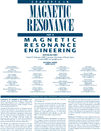
CONCEPTS IN MAGNETIC RESONANCE PART B-MAGNETIC RESONANCE ENGINEERING
Empowering Professionals with Open Access to Pioneering Research.CONCEPTS IN MAGNETIC RESONANCE PART B-MAGNETIC RESONANCE ENGINEERING is a premier journal published by WILEY-HINDAWI, dedicated to advancing the field of magnetic resonance engineering. With an ISSN of 1552-5031 and E-ISSN 1552-504X, this journal offers an Open Access platform since 2022, ensuring that research is freely accessible to scholars worldwide. Covering a broad spectrum of applications in medicine, radiology, nuclear medicine, and imaging, it serves as a key resource for professionals looking to stay updated with the latest advancements and innovations in the field. The journal enjoys notable rankings in various categories, including a rank of #137 in Medicine and #26 in Health Professions within Scopus, reflecting its importance and influence in both academic and clinical settings. As a vital conduit for cutting-edge research, CONCEPTS IN MAGNETIC RESONANCE PART B is committed to fostering the growth of knowledge while addressing the critical challenges and technological enhancements within magnetic resonance methodologies. Researchers, professionals, and students can expect to find comprehensive articles that adhere to high scientific standards, promoting discourse and collaboration across disciplines.

Forensic Imaging
Fostering breakthroughs in forensic evidence analysis and application.Forensic Imaging is a premier international journal dedicated to advancing the field of forensic science through the analysis and implementation of imaging techniques. Published by ELSEVIER, this open access journal provides a platform for researchers, professionals, and students to disseminate innovative studies that bridge the disciplines of Pathology, Forensic Medicine, and Radiology. Since its inception in 2020, it has gained recognition and holds a respectable Q3 ranking in its categories for both Pathology and Forensic Medicine and Radiology, Nuclear Medicine and Imaging, reflecting its commitment to high-quality, impactful research. The journal's practical focus on imaging methodologies offers valuable insights into forensic investigations and enhances professional practices, making it an essential read for those involved in forensic research and application. Available in both print and online formats, Forensic Imaging serves as a vital resource for fostering breakthroughs in the analysis of forensic evidence.
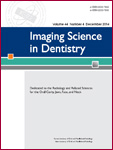
Imaging Science in Dentistry
Bridging the gap between technology and dental health.Imaging Science in Dentistry is a premier open-access journal published by the Korean Academy of Oral & Maxillofacial Radiology, dedicated to the cutting-edge field of dental imaging and radiology. Since its inception in 2011, the journal has played a pivotal role in disseminating crucial research that advances our understanding of imaging techniques in dentistry, imaging-based diagnostics, and treatment planning. With an impressive Q2 ranking in various fields, including Dentistry (Miscellaneous), Radiological and Ultrasound Technology, and Radiology, Nuclear Medicine, and Imaging as of 2023, it is recognized for its contribution to the academic community, attracting a diverse readership that encompasses researchers, clinicians, and students. The journal provides a platform for sharing innovative methodologies, clinical studies, and reviews that shape current practices in dental imaging while promoting open access to enhance knowledge sharing globally. Through its rigorous peer-review process and commitment to high-quality publications, Imaging Science in Dentistry continues to set a standard for excellence in imaging sciences in the dental profession.